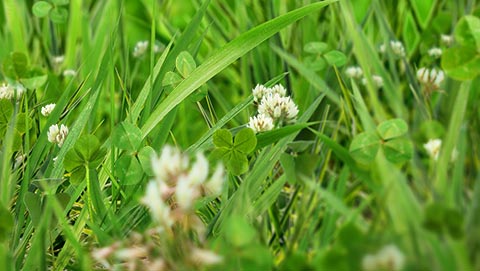Most years, drought affects farmers in some part of New Zealand, causing serious issues with feed supply, productivity and profitability. Nitrogen is commonly applied after the first rains fall, even though this rain may not be sufficient to elevate soil moisture levels in the long term. There is debate over whether this is the best course of action.
Conventional wisdom suggests that there will be sufficient soil mineral N to support growth at this time, thus the benefit of adding fertiliser nitrogen will be negated. Furthermore, it is thought that adding additional nitrogen could increase the risk of nitrate poisoning. To examine these matters, Ballance commissioned research into the subject, and two experiments were undertaken on drought-affected land in the Bay of Plenty and Hawke’s Bay regions.
Experimental Approach
Randomised small-plot trials were set up on one farm in the Bay of Plenty (with a Taupo sandy silt soil) and another in the Hawke’s Bay (with a Pallic soil). When the trial sites were established, both farms had experienced drought conditions and soil moisture levels had been low for some time. Within each trial there were five treatments:
A. Control plots, which received no fertiliser nitrogen
B. Test plots that received 25 kg N/ha immediately after the first rain fell
C. Test plots that received 50 kg N/ha immediately after the first rain fell
D. Test plots that received 25 kg N/ha after subsequent rainfall or irrigation
E. Test plots that received 50 kg N/ha after subsequent rainfall or irrigation
In the Bay of Plenty trial, the land was not irrigated and relied on rainfall for moisture supply. This meant that it dried out again after the first rainfall. In the Hawke’s Bay trial, the land was irrigated after the first rain fell so that soil moisture was maintained at around 33% in the top 0-8 cm. In this instance, treatments D and E were applied four weeks after the initial rainfall.
Find out more about the research
Conclusion and recommendations
While farmers have traditionally been advised to wait until pasture begins to recover from a drought before applying fertiliser nitrogen, this research indicates that nitrogen can safely be applied to pasture after the first significant rains have fallen.
The key findings from this work are:
- Nitrogen applied after the first drought-breaking rain will produce a pasture response
- The initial pasture responses will be greater if soil moisture levels do not decrease after the first rain falls
- Any nitrogen not used immediately by the pasture is not lost from the system; once more rain arrives, a carry-over pasture response to residual fertiliser nitrogen will occur
Although the pattern of response to nitrogen fertiliser is affected by soil moisture levels, the overall pasture response will be similar regardless of whether nitrogen is applied after the first rainfall or whether it is deferred until further rain has fallen.
It is recommended that farmers apply nitrogen fertiliser as soon as the first drought-breaking rains fall. They should also take measures to reduce the risk of nitrate poisoning, e.g. by having other feed on hand so that pasture is not the sole dietary intake.
Download and read the full fact sheet

Understanding Nitrogen on your farm
Nitrogen plays an important role in New Zealand agriculture. When used appropriately, it is an effective addition to the nitrogen provided naturally by clovers and other legumes.
To help you understand nitrogen use on your farm we have collated a range of nitrogen advice backed by science.